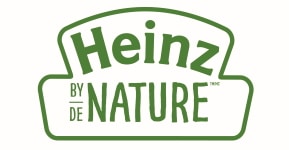When you’re first feeding your brand-new bundle of joy in the early days, it’s hard to imagine there will ever be a time beyond a milky, sleepy baby nodding off in your arms (or a raging, hangry baby demanding a breast or a bottle, let’s be honest). But then before you know it, you reach the milestone you’ve seen played out in pictures on social media time and time again: your wee one’s first taste of solid food, and the subsequent adorable, messy face that goes with it. But how do you approach this rite of passage? With so much conflicting information out there—from government guidelines to your mother-in-law’s opinion—it’s hard to know what to do. Fear not, Mom and Dad, we’ve got the lowdown on the when, the what and the how.
When to start solids
Current Health Canada guidelines state that babies can usually start solids from six months of age, but Dr. Richa Agnihotri, a pediatrician in Etobicoke and Stoney Creek, Ont., says what’s best for each child should be considered on a case-by-case basis. “If a baby is showing signs of readiness, solids could be introduced as early as four months, but no sooner and only if the child’s doctor is in agreement,” says Agnihotri.
So, what are signs of readiness? Behaviours to look out for include the following:
- Your baby can hold their own head up, and sit with or without support
- Your baby has lost the tongue-thrust reflex (meaning they won’t just push solid foods out of their mouth with their tongue)
- Your baby is putting things in their mouth and attempting to chew on them
- Your baby breastfeeds more than 10 times a day, or drinks more than 40 ounces of formula (or a comparable combination of feeds and bottles)
- Your baby is working on the “pincer” grasp with their thumb and forefinger, in an attempt to pick up objects
- Your baby seems interested in mealtimes and may reach for food other family members are eating
If your child is exhibiting these cues, the next decision to make is how you will introduce solid foods. Will you go the route of spoon-feeding your baby soft or pureed foods, or will you try baby-led weaning?
The purée method is likely the one you have witnessed most often, where a caregiver spoons blended or naturally squishy food into a little one’s mouth. The second option, baby-led weaning, involves giving a baby little bits of solid food, appropriately torn apart or cut up, for them to pick up and feed themselves. Both have their benefits, and parents can choose either tactic, or a combination of both, to determine the best approach for their child and their family.
What to feed your baby first
The official recommendation for a first food has long been items that are high in iron, whether it is iron-fortified cereal, or iron-rich foods like beef, lamb, game, poultry and fish. (Meat alternatives include eggs, tofu and legumes.) From here, vegetables and fruits follow, and the order of introduction for specific foods is completely up to parents.
But in recent years, there has also been a shift towards early introduction of allergenic foods, as opposed to the old guideline of waiting until a year or older to try a child on potential allergens (like tree nuts, eggs, wheat, shellfish, etc.). The theory behind this shift is that earlier introduction may offer a certain amount of tolerance and protection against an allergic response. This is especially important for babies who have a personal or family history of allergies, eczema or asthma, says Dr. Agnihotri.
This is the rule Adrianna Smallwood, a dietitian in St. John’s, Nfld., also recommends to her clients: “Introducing the high-allergen foods early gets them out of the way, but it needs to be done safely. Parents need to make sure they know what to look for, in terms of an allergic reaction.” The acute signs of an allergy in infants can include swelling of the mouth, tongue or throat; hives spreading; difficulty breathing; coughing or wheezing; paleness or blueness of face or lips; faintness, weakness or passing out. They may also include longer lead-time reactions, like gastrointestinal issues.
How to prepare or purchase first foods
Many parents wonder if homemade or store-bought food is best, and really, there isn’t a right or wrong answer (so no parent guilt required!). For some Moms and Dads, preparation at home is simple and straightforward; for others, there may be limitations. At the end of the day, as long as parents are choosing healthy foods, any combination of homemade and store-bought will help your little one thrive.
If you are making baby food at home, stick to whole foods and don’t add salt or sugar. (You can eventually add more flavour through the addition of mild spices—like adding a little cinnamon to homemade applesauce—but you’ll likely want to start with the food in its purest form first.) Preparation methods are also the chef’s choice—steaming, roasting, simmering, boiling, etc.—as long as the food is soft enough for your baby to handle.
If you’re looking in the grocery store aisles for a more convenient and premade option for your baby’s first foods, you’ll want to look for products that are close to homemade, with organic, natural ingredients. This means reading the labels for ingredients you can pronounce. Avoid choosing products with salt, sugar (including natural sweeteners like honey or maple syrup) or artificial preservatives. Instead, look for whole, natural foods, like sweet potatoes, apples and pears (rather than concentrates or other partial food products). Some products will also mention preparation methods. Look for the same kind of simple processes you’d use in your own kitchen.
HEINZ BY NATURE baby purées, which hit stores in June 2020, are a great example of what to look for. This lineup of baby purées includes options that are organic and made with natural ingredients and acerola cherry, an antioxidant-rich superfood high in vitamin C. HEINZ BY NATURE pouches have no added salt or sugar and every ingredient is recognizable. It is also made using simple processes, just like you would use at home – washing, chopping, heating and puréeing. HEINZ BY NATURE baby purées are available in convenient pouches for home and on the go, or in recyclable glass jar formats for parents who are looking for a more eco-friendly option.

How to introduce new foods
Start with very small amounts, and don’t get discouraged if your child doesn’t like the solid food right away (remember, eating is a new skill, plus they’ve only had breastmilk or formula for their entire lives so far—no matter how you choose to introduce solids, the texture is going to be a little weird for them!).
For the first month to six weeks, breast- or bottlefeed your baby before sitting down to try solids, says Smallwood. This way they aren’t starving, and won’t get frustrated if their hunger isn’t satisfied fast enough. Once the little one has started to eat enough to replace a full feed, and the meal is varied and not just one food at a time, parents can consider dropping a nursing session or a bottle, Smallwood says.
Smallwood also stresses the importance of paying attention to a baby’s cues. It’s tempting to rev up the good ol’ airplane trick and coax them to eat, but Smallwood says babies know if they are full, uninterested or not loving the taste of the food item. End mealtime before your baby (or you!) veers into unhappiness or frustration, to keep food introduction positive and productive.
Once you’ve started solids, the recommendation has historically been to wait three days between new foods. The theory is that this time allows you to try your baby on the food a few times, to gauge if they are going to have an allergic reaction. But there is also evidence that this might not be necessary. If you’re worried, following this guideline doesn’t hurt and allows you to err on the side of caution.
For those using premade purèe options, parents will also want to pay attention to the age guidelines on foods. Perfect for getting your little one started on the journey to food discovery, HEINZ BY NATURE baby purèes include a wide variety of flavours, as well as single-ingredient options, so there are choices for babies from six to 24 months.
Look for HEINZ BY NATURE in-store or, to learn more, visit www.heinzbaby.com for details.








